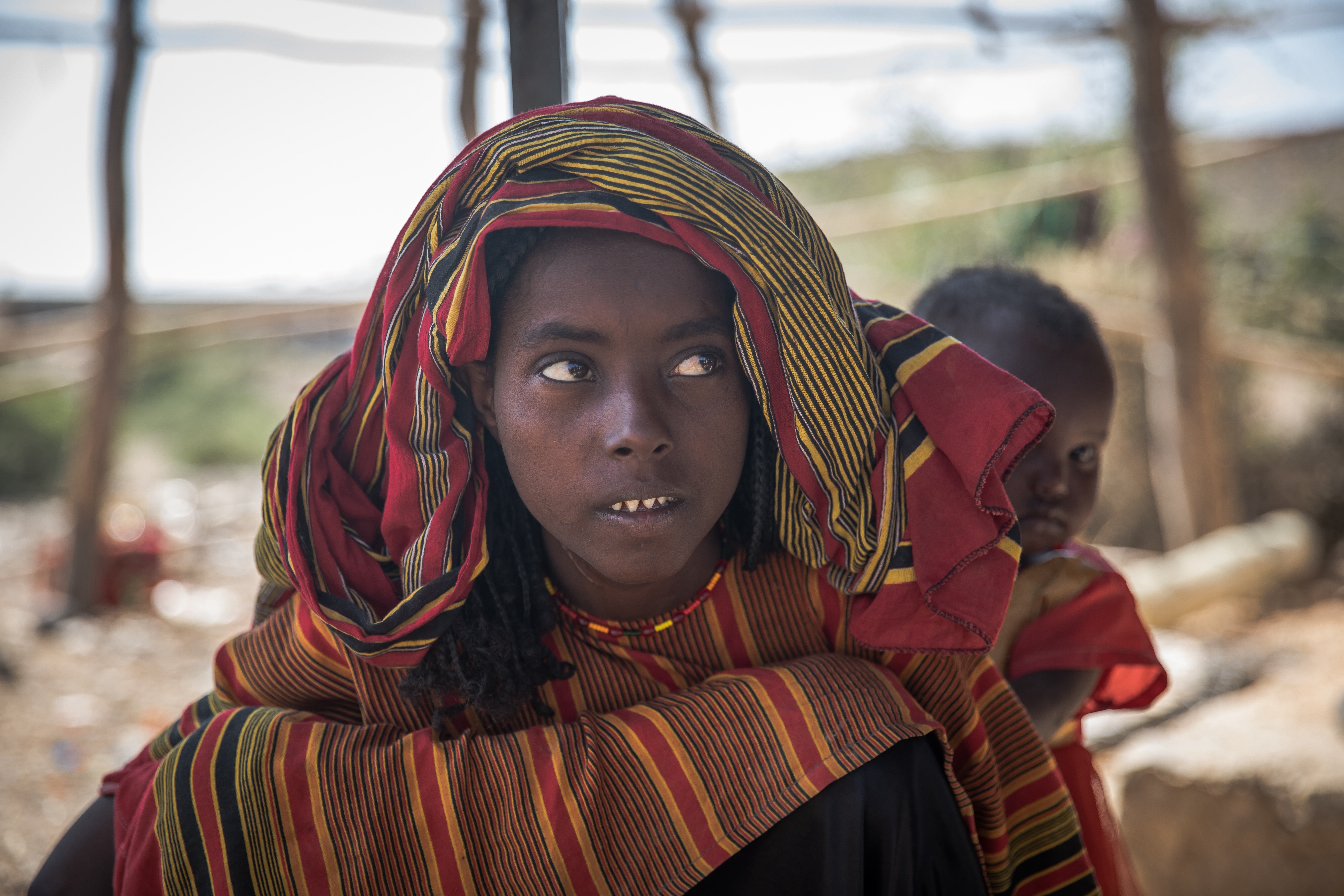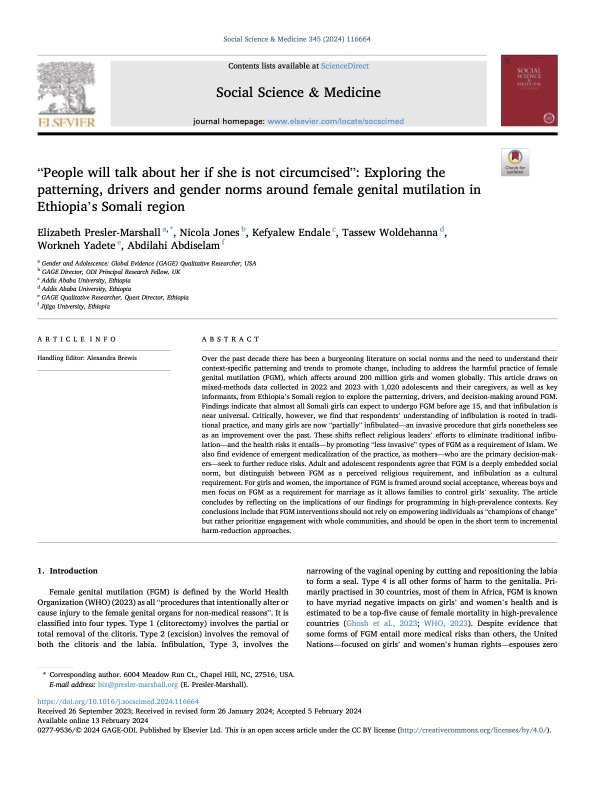
Female genital mutilation in Ethiopia’s Afar region: Patterning, drivers, and decision-making
publication
Female genital mutilation in Ethiopia’s Afar region: Patterning, drivers, and decision-making
27.08.2024 | Ethiopia
Country
Ethiopia
Capability domains
Bodily integrity and freedom from violence
Audience type
Researcher
Year of publication
2024
Study methodology
Mixed-methods
Authors
Elizabeth Presler-Marshall, Kefyalew Endale, Nicola Jones, Tassew Woldehanna, Workneh Yadete, Robha Murha, Yitagesu Gebeyehu
Female genital mutilation (FGM), defined by the World Health Organization as “all procedures involving partial or total removal of the external female genitalia or injury to the female genital organs for nonmedical reasons,” has severe and lifelong detrimental impacts on girls’ and women’s health, and Sustainable Development Goal 5 calls for its elimination [1,2]. Meeting that goal will depend on what happens in Ethiopia; with a high prevalence rate and as Africa’s second most populous country, it has the world’s largest absolute number of girls and women who have undergone FGM [3]. Ethiopia’s ability to deliver on the commitments laid out in its 2018 Roadmap to End Child Marriage and FGM depend in turn on whether it can replicate and accel- erate recent national-level progress in its pastoralist regions, including Afar. In these regions, populations are mobile, access to education and health services is limited, and FGM remains both extremely invasive and widely practiced.
Suggested citation
Presler-Marshall, E., Endale, K., Jones, N., Woldehanna, T., Yadete, W., Murha, R. and Gebeyehu, Y. (2024) 'Female genital mutilation in Ethiopia’s Afar region: Patterning, drivers, and decision-making' Journal of Adolescent Health 75(3): 496-501 (https://www.jahonline.org/article/S1054-139X(24)00248-9/pdf)

